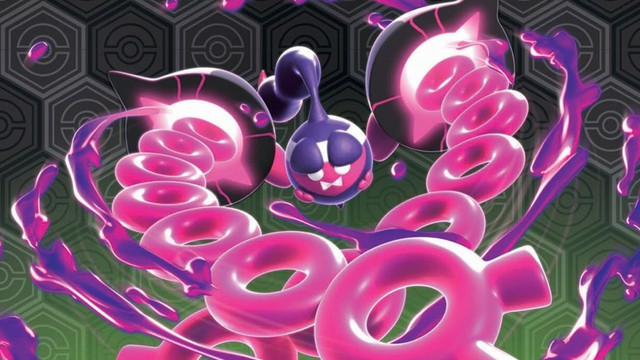Warning: Spoilers follow for the Blue Beetle movie.
Latine superheroes are enjoying a bit of a boom on the big screen right now. Last year’s Doctor Strange and the Multiverse of Madness introduced us to America Chavez, the bulletproof Puerto Rican heroine played by Xochitl Gomez. Miles Morales made his return in the critically acclaimed marvel Across the Spider-Verse. And now, DC Studios has introduced its very first Latino hero in the Blue Beetle movie: Jaime Reyes.
What’s unquestionable is that we’ve not seen a DC character quite like this on the big screen before. But how exactly did Jaime, the third incarnation of Blue Beetle, end up becoming the face of the character? And does the movie do his heritage justice? Let’s morph into Jaime’s Blue Beetle armor and find out!
With as long a history as Blue Beetle has had in the comics, it’s interesting that Jaime is the version of the hero receiving his own film. But in some ways, Jaime’s introduction as the new bearer of the mantle revitalized Blue Beetle for the mainstream back in 2006. This popularity is owed in part to Jaime’s arcs outside of the comics. While his forbears Dan Garrett and Ted Kord have been around longer, Jaime is the only Blue Beetle to have had major appearances and narrative arcs outside print media. With stints in Batman: The Brave and the Bold, Smallville, and Young Justice, Jaime might easily be more recognizable to a consumer who isn’t all that immersed in comics themselves.
The movie is a major milestone for DC, important in the same ways that Black Panther, Into the Spider-Verse and Miss Marvel have been. These projects depict the important ways we’re influenced by the families we come from and, most importantly, allow people to see themselves in the role of a hero. It’s hard to convey just how deeply Jaime’s Mexican-American identity emanates from every aspect of Blue Beetle, especially as the marketing has focused primarily on the standard “superhero origin story” beats of it. What audiences aren’t going to see until they get to the theater is just how Blue Beetle’s cultural specificity - captured brilliantly by director Ángel Manuel Soto and writer Gareth Dunnet-Alcocer - only solidifies Jaime as one of the more interesting superheroes we’ve seen in theaters.
What half-hearted attempts at “representation” seem to forget is that cultural identity isn’t some jacket one can shrug off at the end of the day. Like Jaime’s scarab, it's infused with every part of us, inextricable as it pounds through our very blood. Blue Beetle recognizes that Jaime’s Latinidad affects everything about him, from everyday mannerisms to the ways in which he processes strong emotion.
There are moments of levity in the film, of course. When the scarab (called Khaji Da) launches Jaime through the Reyes’ roof after they first fuse and his mother (Elpidia Carrillo) hurriedly tries to report him missing, his grandmother Nana (Adriana Barraza) lights a candle in prayer using his college graduation photo as a makeshift shrine. After he returns from this frenetic escapade through Palmera City and promptly passes out, the family looms over as they hold a pot of Vicks under his nose. The label is turned away from the camera but the balm’s blue jar is infamous to anyone who’s ever been even slightly ill in a Latine household.
Jaime’s Uncle Rudy (George Lopez) refers to him almost exclusively as cabezón, an affectionate nickname that hints at Jaime’s whole childhood of stubbornness. Flaco, chiquita, gordo, mijita, cariño and more – these terms of endearment tend to stick once they’ve been applied to you (my dad’s family still refers to him as Javiersito – little Javier – even as he’s turning 59 later this year). Refreshingly, Blue Beetle seems to intentionally reject machismo. Jaime’s father (Damián Alcázar) and uncle treat him with tenderness rather than pressure him into prideful aloofness. Hypermasculinity can be a huge problem in Latine households, alienating young boys who are taught to repress their emotions out of a sense of pride. That Jaime, his father, and his uncle can casually express their love or sadness with one another is truly heartwarming.
What’s great is that the film doesn’t paint the Reyes family as a vague Pan-Latino amalgamation. They are very specifically Mexican. Musically, Blue Beetle goes far to establish that. Selena feels like a given, as Rudy bumps “Bidi Bidi Bom Bom” in his decked-out pickup truck at one point in the film. Mexico’s late, great musical legend, Vicente Fernandez, gets a play, as does the energetic party favorite “La Chona.” These songs aren’t deep cuts by any means but it’s still a pleasant surprise to listen to them over the theater speakers.
In particular, the way this film deals with the concept of grief and generational trauma feels so resonant with the experience of growing up in a Mexican-American household. During the climax of the film, Nana reveals her revolutionary past as she guns down villain Victoria Kord’s (Susan Sarandon) forces. “Down with the imperialists!” she declares, referencing Latin American anti-colonial insurgency efforts such as the Zapatista uprising in 1994.
As concerns grow over Jaime’s possession of Khaji Da, Rudy hints at the undocumented status of Nana and Jaime’s father. In border states like Texas, in border cities like El Paso (where Jaime’s character originally hails from), these are real concerns for community members. Maybe no one in your family is undocumented, but your neighbor or friend could be and that’s enough to keep people suspicious of xenophobic outsiders or potentially overzealous law enforcement.
It’s a huge reason behind the valid frustrations toward DC’s transplanting of Jaime from his historical home of El Paso to the fictional coastal town of Palmera City (articulated brilliantly in Texas Monthly by Jose R. Ralat). The move itself could be aimed at providing a shorthand of commentary on race and class to its audience. In the last couple of years, there’s been a deluge of media circling resort towns and the stark inequality that surfaces within the microcosm of a tourist destination: Think The White Lotus, Saint X, and Acapulco. There are establishing shots in Blue Beetle of Jaime’s family driving through a glitzy, gentrified downtown until they eventually arrive at their far less lavish neighborhood. This extreme contrast between luxurious seaview mansions and Jaime’s childhood home would have been less easily capturable in El Paso specifically. The film does pay homage to the Texas border town – the Reyes family lives on El Paso St. for instance – but it does unfortunately remove some meaningful context from the character by changing his hometown.
Our ancestral histories can define the way that we grieve. In a massively devastating moment, Jaime’s father Alberto suffers from a fatal heart attack as Victoria Kord’s forces swarm the Reyes family home. Under Nana’s encouragement, the family puts aside their grief and moves onto their greater purpose: rescuing Jaime from Kord’s clutches. They may move on in the moment but there’s no press to quell their emotions, no attempt at diminishing the losses that the Reyes family faces. Instead, there’s a fierce reiteration of a philosophy honed through the fires of generational trauma. As Nana says, you take your suffering and find a way to turn it into strength.
As the dust settles, as the family realizes they’ve made it out, as the Reyes are together once again, Nana tearfully tells them that now is the time to grieve. In that moment, the family does something so heart-wrenching, so bittersweet, and so incredibly powerful: They cry together.
Blue Beetle is unique in the way that it crafts Jaime into such a believable character. Really, it’s profound because of what it says to us about family, how it manages to create stakes so personal and people so real that you’re just as heartbroken by their tragedies and just as elated at their triumphs as they are. It’s a new kind of superhero movie; let’s hope it’s not the last time we see the Reyes family.
For even more on the film, check out how to watch Blue Beetle, dig in on the Blue Beetle ending and post-credits explained, or find out how much Blue Beetle knows about Blue Beetle.





